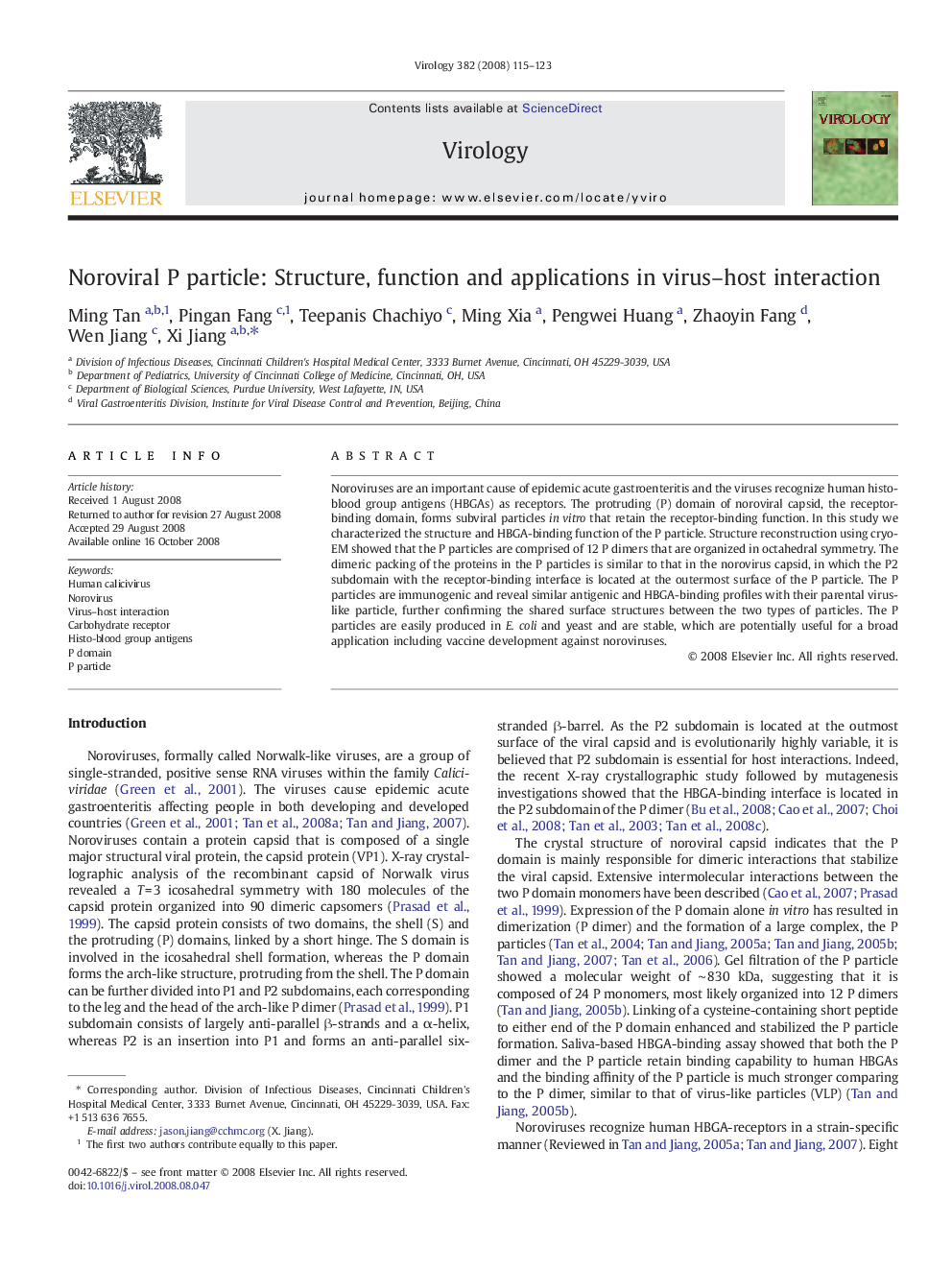| کد مقاله | کد نشریه | سال انتشار | مقاله انگلیسی | نسخه تمام متن |
|---|---|---|---|---|
| 3425972 | 1227308 | 2008 | 9 صفحه PDF | دانلود رایگان |

Noroviruses are an important cause of epidemic acute gastroenteritis and the viruses recognize human histo-blood group antigens (HBGAs) as receptors. The protruding (P) domain of noroviral capsid, the receptor-binding domain, forms subviral particles in vitro that retain the receptor-binding function. In this study we characterized the structure and HBGA-binding function of the P particle. Structure reconstruction using cryo-EM showed that the P particles are comprised of 12 P dimers that are organized in octahedral symmetry. The dimeric packing of the proteins in the P particles is similar to that in the norovirus capsid, in which the P2 subdomain with the receptor-binding interface is located at the outermost surface of the P particle. The P particles are immunogenic and reveal similar antigenic and HBGA-binding profiles with their parental virus-like particle, further confirming the shared surface structures between the two types of particles. The P particles are easily produced in E. coli and yeast and are stable, which are potentially useful for a broad application including vaccine development against noroviruses.
Journal: Virology - Volume 382, Issue 1, 5 December 2008, Pages 115–123